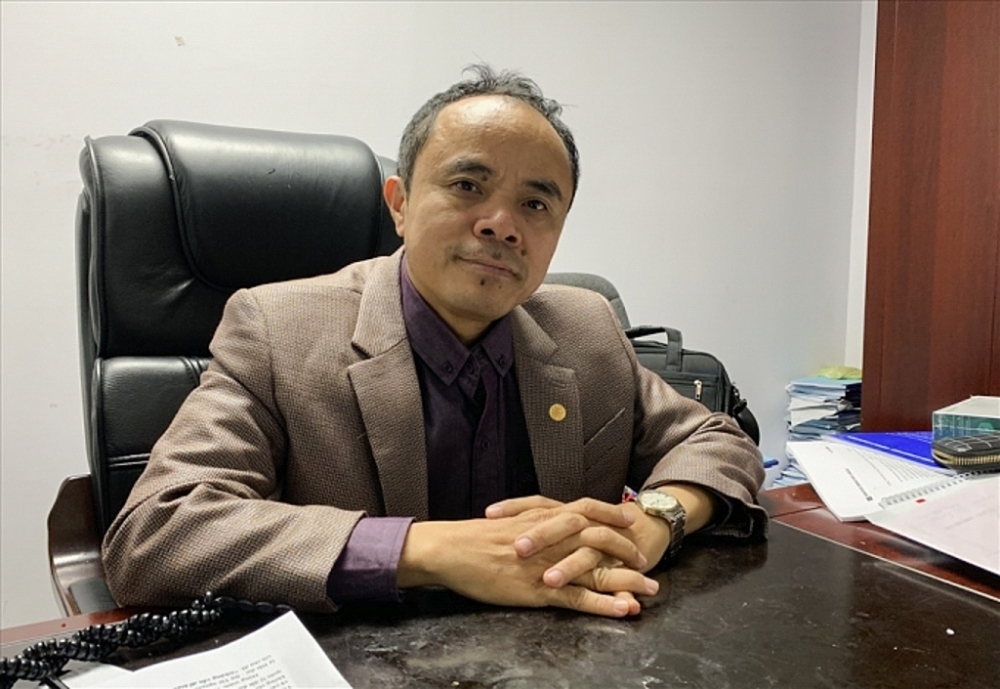 |
| Dr. Le Xuan Sang, Deputy Director of the Vietnam Institute of Economics. |
To make good use of the opportunity, Dr. Le Xuan Sang, Deputy Director of the Vietnam Institute of Economics, said that one of the important factors is that Vietnam needs to maintain political stability and make good use of free trade agreements (FTAs).
In the context of the Covid-19 pandemic and the shift of the global supply chains, there is a trend of shifting FDI capital. Could you please say more about this trend?
In recent years, FDI trends have changed significantly under the influence of very important global factors. These are the US-China trade war, the Covid-19 pandemic, the Russia-Ukraine conflict and the energy crisis.
First of all, the leading position is still FDI in the field of sustainable development, typically FDI projects for renewable energy and green growth. It can be seen that the trend of FDI in sustainable development has been established before. However, under the impact of climate change and the Russian-Ukrainian conflict, this trend may be difficult.
The second group of FDI that occupies an important position in recent times is the digital economy. The US-China trade war and the impact of Covid-19 causing a supply chain disruption, is strongly related to this field, especially for chips or semiconductors.
The third FDI trend is that enterprises have a global shift and reposition in their investment positions. They moved to consumer markets for electronics such as returning to the US, EU or Japan; at the same time, the largest investment places are Taiwan (China), and Korea. In terms of territory, Asia-Pacific is still the largest FDI region. India has for the first time surpassed China to become the largest FDI recipient because China has had the impact of the Covid-19 pandemic and they maintained a “Zero Covid” strategy for a long time.
In the trend of shifting FDI capital, what are the opportunities for Vietnam, sir?
FDI into a country follows four main motivations, including FDI to improve investment efficiency provided that domestic investment is no longer effective; exploit the current market; exploitation of resources; exploit, seek and seize strategic assets. Vietnam has many favorable factors that increase the chances of attracting FDI into Vietnam belongs to the first two types.
Vietnam is a relatively young population market and is also the only country with a large population participating in 15 FTAs. That helps foreign FDI into Vietnam and at the same time can dominate the global market, especially under the positive impact of new generation FTAs. In addition, Vietnam has relatively cheap labor and land rent. Besides, the political environment, including the geo-economic position of Vietnam, is also very favorable. Vietnam is close to China, which is a big market, and logistics transportation is also not disrupted.
Besides the favorable factors, in your opinion, what are the outstanding shortcomings affecting Vietnam’s ability to attract FDI?
The obvious disadvantage in attracting FDI in Vietnam is that the infrastructure is not as good as the region, and the quality of human resources is not good. Domestic supporting industry enterprises are not strong enough so when FDI enterprises invest in them, they can cooperate and coordinate to improve efficiency and increase initiative for FDI enterprises, especially in the context of uncertainties and conflicts of geopolitics.
To be able to connect with FDI enterprises, domestic enterprises need to meet certain requirements. However, the disadvantage is that domestic enterprises have uncompetitive prices, the quality of goods is not good enough, and at the same time, the capacity to deliver goods on time is limited. Further, it must be affirmed that Vietnam’s supporting industry is still very weak; most of the fields have not achieved the desired effect.
In addition, currently, Vietnam has not designed groups of policies to promote linkages between domestic and FDI enterprises.
Vietnam is competing with many other countries in the race to receive capital flows from multinational companies. What does Vietnam need to do to get ahead in this race, sir?
There are many things to do, but in order to have a breakthrough, Vietnam must first exploit its geopolitical and geo-economic position. Second, Vietnam needs to make good use of new-generation FTAs while maintaining political stability.
In the long run, Vietnam must develop supporting industries. Notably, in the policy design stage, it is necessary to have a policy to directly connect the two sectors, which are FDI enterprises and domestic enterprises. This is something that Vietnam has never had before. Meanwhile, the international experience is very good, for example, there can be support for each group of small and medium enterprises in Vietnam to connect with the group of foreign-invested enterprises.
It must also be added that there is a problem of fundamental policy adjustment in FDI attraction that Vietnam has done but has not achieved the expected effect, it is necessary to continue to improve the quality of human resources. There are many cases where provinces are 1-2km apart, but where there is a better quality of human resources, attracting FDI is much better.
Another important factor is how to attract more FDI enterprises through joint ventures.
The strategic direction in attracting FDI in the future is to actively participate in the Indo-Pacific Economic Framework. This plays a very important role in Vietnam’s digital economy development, supply chain recovery as well as issues related to the green economy.
More importantly; when joining, Vietnam has very strong allies both in terms of economy and politics. All help Vietnam have a stronger position.
By Thanh Nguyen/Bui Diep.
